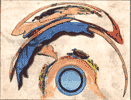Slums versus Ducktown
Utopias sprout from dreams of ultimate harmony in which there is little space for friction, otherness or protest. Various ideological Utopic projections continue to exist in texts, visuals, thoughts and desires, but the reality of a fast growing global urbanisation is far from ideal and comes with many problems; it is calculated that in the next fifty years, two-thirds of humanity will be living in towns and cities. A major challenge is to minimize poverty in cities and improve the urban poor’s access to basic facilities such as shelter, clean water and sanitation.

UN-HABITAT; The United Nations Human Settlements Programme is the United Nations agency for human settlements. It is mandated by the UN General Assembly to promote socially and environmentally sustainable towns and cities with the goal of providing adequate shelter for all.
Continue Reading




